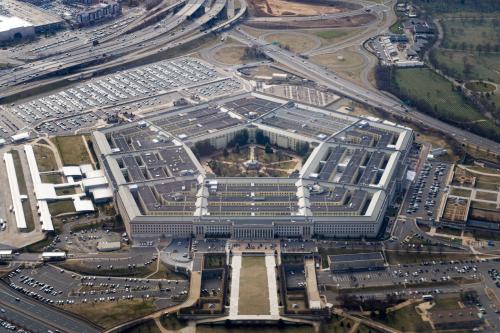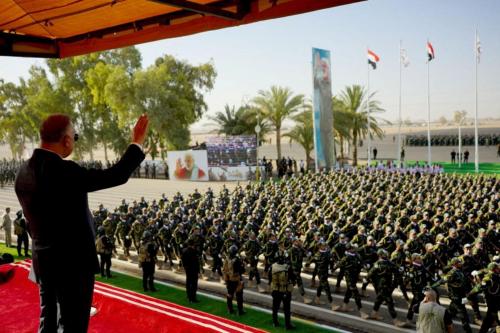The draft that the Obama administration submitted to Congress to authorize the use of military force against ISIS seems to be pleasing almost no one, and that was bound to be. Some of the strongest early criticism is coming from doves, including people who support Mr. Obama on most other issues, but hawks are complaining as well. One can see why this tardy submission of a draft resolution was preceded by months of an Alphonse-and-Gaston routine in which both the administration and the Congress were looking to the other to offer a proposal first. Each seemed to sense it was impossible to come up with something that would not have unavoidable and easily noted flaws. Probably the draft will be modified in the course of the coming Congressional debate, and probably the modifications will still leave many doves and many hawks dissatisfied.
Several questions and potential problems are worthy of attention in the debate. Perhaps the most significant question concerns the fact that this draft does not repeal the authorization that Congress passed in 2001 shortly after the 9/11 attack, and that two administrations subsequently have used as the legal basis for a variety of armed actions in several different countries. The current administration has been saying that this earlier resolution was all the authorization it needed for the military actions it already has been taking for months against ISIS. If the 2001 resolution, so interpreted, remains in force, then how can whatever limits are specified in a new resolution have any significance and any effect?
The coming debate in Congress, however overdue it is and however flawed will be whatever product comes out of it, is nonetheless welcome. It is part of a proper function of the legislative branch. This is not an instance, as has arisen on some other issues, of members trying to act like 535 secretaries of state and getting in the way of negotiating international agreements. Nor is it, at least not yet, a case of members trying to act like 535 commanders-in-chief and interfering in the management of military operations. Instead it is a matter of the people’s representatives setting basic policy and priorities when it comes to deciding whether a particular goal overseas merits expending American blood and treasure and putting American lives in harm’s way.
Whatever its outcome in terms of a specific resolution, the debate might help to illuminate why it is so difficult to put into legislative language a precise statement of what is intended. The fundamental reason goes back to the habit of thinking of counterterrorism in military terms, as reflected in the unfortunate phrase “war on terror.” Terrorism is a tactic, not an enemy. Wars end; terrorism doesn’t. Military measures are only one type of tool, and not necessarily the most effective one, in countering terrorism. Regarding that last point, it would be appropriate for members of Congress to debate not only the legal issues involved in an authorization of force but also the practical and empirical issues pertaining to what is most likely to cause a group such as ISIS to wax or to wane.
Declaring war, or authorizing force, against a state involves a well-defined adversary, with the limits of the armed conflict defined by the activities of the target state. The organizational manifestations of international terrorism are much different, consisting of amoeba-like groups that shift shape and identity and that lack clear boundaries in terms of either structure or theaters of operation. Terrorist groups—including the ones that have most preoccupied the United States in recent years—metamorphose, splinter, and spread. The names assumed by groups are of little use in adding clarity to this chaos, because adoption of a name sometimes is nothing more than an expression of fondness for a certain ideology or of admiration for what another group carrying that name has done, or an attempt to sound scarier, rather than reflecting any organizational cohesion. This has been true of many who have adopted the al-Qaeda name as well as ones today adopting the ISIS name. This is why it is so hard to word a resolution authorizing force resolution against such groups, as if it could be done as clearly and precisely as declaring war against state X. It is why there is justified concern about whether any meaningful limit is being applied by the current draft resolution when the stated target is ISIS “or associated persons or forces” and this is further declared to mean “any closely-related successor entity in hostilities against the United States or its coalition partners.” That is a very wide window.
It is good for Congress to try to come up with the least bad version of a resolution aimed at ISIS. But what is needed even more is a different kind of Congressional authorization—perhaps a much-improved version of the 2001 resolution—that recognizes that it might be appropriate in carefully selected times and places to apply the military tool in counterterrorism, without vainly pretending as if this could be done in the same way as declaring war against a particular state. But exactly what such an authorization would look like is not at all clear.
This piece was originally published by The National Interest.



Commentary
Op-edWhy authorizations of force against terrorists are inevitably troubled
February 12, 2015